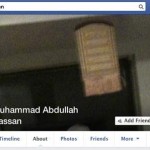Foreign students on F-1 OPT, F-1 CPT or STEM extension
Foreign professionals in specialty occupations, such as programmer analysts, physical therapists, accountants, database administrators, market research analysts, engineers, management analysts, graphic designers, pharmacists, financial analysts, and others with Bachelor’s or equivalent degree
Foreign nationals who have spent at least one year outside United States after reaching the 6-years limit on H1B, to come back and work in a specialty occupation
U.S. companies to employ qualified foreign nationals in jobs that require a bachelor’s degree and specialized skills
So this begs the question, just how deep is the collusion and are there recourses for people that were fired as you read on….
Senators seek probe of claims US workers fired, forced to train foreign replacement
A popular visa program allegedly is being misused by U.S. companies to lay off thousands of American workers and replace them with foreign labor.
And, adding insult to injury, many of the laid-off workers allegedly have been forced to train their replacements, in what one anonymous whistleblower called a “humiliating” experience.
The allegations have caught the attention of a bipartisan group of senators — including immigration hawk Sen. Jeff Sessions, R-Ala., and the No. 2 Senate Democrat, Illinois’ Dick Durbin — who are calling for a federal probe. A letter sent by 10 senators urging an investigation specifically cited reports of the firing and hiring practices at Southern California Edison, California’s second-largest utility. The incidents are concentrated in the IT field, and involve American workers being replaced by H-1B visa holders.
“A number of U.S. employers, including some large, well-known, publicly-traded corporations, have reportedly laid off thousands of American workers and replaced them with H-1B visa holders,” the senators wrote.
In the letter to Attorney General Eric Holder, Homeland Security Secretary Jeh Johnson, and Labor Secretary Thomas Perez, the senators urged the departments to “investigate the unacceptable replacement of American workers” to see whether laws were broken.
The H-1B program is supposed to be used to bring in, on a temporary basis, skilled workers with highly specialized skills not readily available in the U.S. They are often used in the technology sector to bring in engineers and computer programmers.
Further, U.S. employers can hire foreign workers for up to six years and must pay them the same rate they would pay other workers with similar qualifications, or the prevailing wage for that job and location, whichever is higher. This is done to prevent foreign workers from depressing U.S. wages and from being exploited.
But reports have surfaced that the replacements are happening at an alarming rate. And former Southern California Edison workers have complained to lawmakers that they were replaced by less-skilled workers at lower costs.
Anonymous workers who were displaced by the visa holders also submitted written testimonials to lawmakers detailing their firings. Several claimed they were forced to train their replacements, and threatened with losing their severance if they did not.
“We had no choice in this,” one anonymous worker who claimed to have been one of those let go from Southern California Edison, said in a letter. The worker described how when the two vendors were picked – Infosys and TCS, both major Indian companies – SCE employees were told to “sit with, video chat or do whatever was needed to teach them our systems.”
If they did not cooperate, according to the testimonial, “we would be fired and not receive a severance package.”
Another worker described this process as “humiliating.”
In a statement, Southern California Edison said it abides by the law and will cooperate with any investigation that concerns the issues mentioned in the senators’ letter.
The company explained that it’s reducing its information technology department from 1,400 to 860. Of those left, 97 percent are permanent California residents and 3 percent are on H-1B visas.
Southern California Edison said it’s contracting with IT vendors to fulfill certain contracts and that most of those workers are permanent U.S. residents and aren’t working under H-1B visas.
“By transitioning some IT operations to external vendors, along with SCE eliminating some customized functions it will no longer provide, the company will focus on making significant, strategic changes that can benefit our customers,” Southern California Edison’s emailed statement read.
But the senators, in their letter, raised several questions about how the replacements were being done. They said it appears the workers are often not employees of the U.S. company laying off workers – but are contractors working for foreign-owned IT consultants.
The H-1B program stipulates that applicants must have a valid “employer-employee relationship” – and the senators questioned whether that was the case here.
They also asked whether the companies “engaged in prohibited citizenship status discrimination” (against American citizens); and whether the visa petitions showed “any evidence of misrepresentation or fraud.”
Sessions said in a statement that the SCE allegations “ought to be the tipping point that finally compels Washington to take needed actions to protect American workers.”
The letter from senators follows a hearing last month by the Senate Judiciary Committee, which invited Southern California Edison to testify, though the company declined.
Ronil Hira, a professor at Howard University, said at the hearing that the utility outsourced work to two companies, and those companies employed H-1B staffers who were then trained by the employees they were replacing. “There could not be a clearer case of the H-1B program being used to harm American workers’ wages and working conditions,” Hira said.
Republican senators seeking the investigation are Sessions, Charles Grassley of Iowa, James Inhofe of Oklahoma, and Bill Cassidy and David Vitter of Louisiana.
Democratic senators seeking the investigation are Durbin, Richard Blumenthal of Connecticut, Sherrod Brown of Ohio and Claire McCaskill of Missouri.
Sen. Bernie Sanders, an independent from Vermont, also signed the letter.




